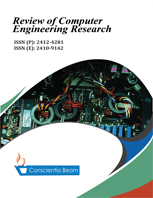A secure and effective data aggregation in WSN for improved security and data privacy
DOI:
https://doi.org/10.18488/76.v10i3.3494Abstract
The increasing prevalence of internet usage and mobile devices has underscored the critical importance of safeguarding personal data. This is especially important in Wireless Sensor Networks (WSNs), where information typically requires in-network computing and collaborative processing. These computationally demanding approaches are not suitable for resource-constrained WSN nodes. Aggregating data effectively while protecting user data is a major challenge in wireless sensor networks. Many privacies of homomorphism encryption-based WSN data aggregation methods have been created and investigated recently. Since cluster leaders (aggregators) may rapidly combine cypher texts without decryption, communication overhead is reduced, making these data aggregation methods more secure than traditional ones. However, the base station only receives aggregated output, causing issues. Initial limits apply to aggregating functions. If the aggregated output is the sum of sensing data, the base station cannot acquire the maximum value. Second, attaching message digests or signatures to sensory samples does not allow the base station to validate data authenticity. In dangerous places, WSNs must be energy-efficient and private. In this research, we present a data aggregation method known as Energy-Efficient and Privacy-Preserving (E2P2). E2P2 data aggregation utilizes less energy and yields more accurate results. Private data aggregation with increased accuracy and hybrid encryption is presented in this research. The goal is to reduce data transmission and energy use collisions and offset collision-induced loss. Extensive simulations compare E2P2 to earlier approaches. Experimental results show that E2P2 outperforms other algorithms. Good exactness, complexity, and safety are demonstrated by theoretical and simulation results.





